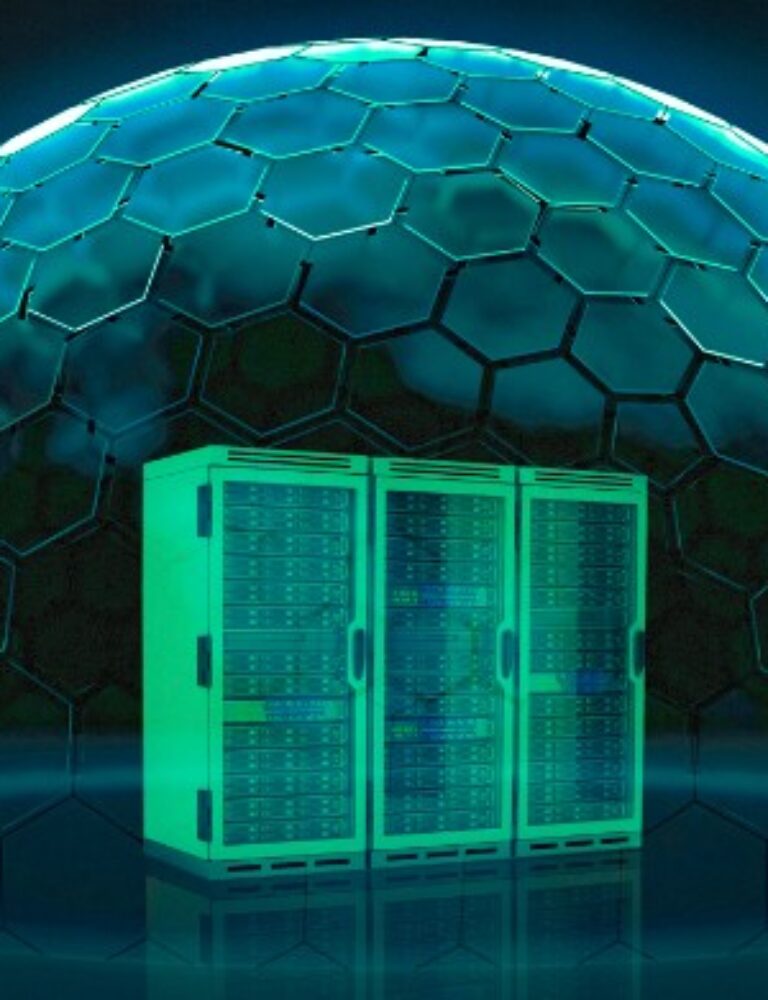
The growing interest in sustainability refers to a growing awareness and priority for environmental responsibility, also, among cloud providers. In the context of this trend, data centers are increasingly focusing on developing and implementing green solutions to reduce the negative impact of operations on the environment.

Green trends in IT
Getting down to specifics – cloud providers focus on reducing electricity consumption through efficient resource management, using more energy-efficient technologies, and developing their renewable energy sources.
Innovative practices are being implemented, such as cooling the server rooms also using energy-saving solutions. The use of more efficient and environmentally friendly cooling technologies, such as the liquid cooling used at Polcom, allows a significant reduction in energy consumption, which is part of the concept of sustainable development that also includes European data centers.
The European data center’s path towards sustainability
The European Parliament’s directive establishing ecodesign requirements for servers and data storage products is part of this trend. It defines an acceptable operating temperature range for IT equipment that is significantly higher than that previously used in data centers. According to the aforementioned directive, the permissible operating range for IT equipment is up to 32⁰C for the lowest class of operating conditions, to as much as 45⁰C for the highest class. Raising the air temperature in the server room directly increases the efficiency of the data center cooling system. This is done by reducing, in the operation of the refrigeration system, the share of equipment operating based on refrigerant compression. At the same time, the share of compressor-free refrigeration equipment (e.g. dry coolers or cooling towers) is increased.
It is also a good solution to manage waste heat, of which data centers are a significant source. This can be used, for example, to heat office buildings, thus further reducing the energy consumption of the building complex.
In addition, reducing environmental impact also includes reducing electronic waste, recycling equipment, and minimizing greenhouse gas emissions associated with cloud operations.
Choosing a sustainable data center
Following this trend means that cloud service providers are committing to contribute to the environment by implementing innovative and sustainable cloud infrastructure management practices. Such a perspective, however, not only encompasses modern technology but also ethics and concern for future generations. In the world of cloud services, environmental responsibility has thus become an important part of the strategy, shaping the future of technology in a sustainable and environmentally friendly way.
Data center service providers should therefore look for solutions to minimize the environmental impact of their operations. It is therefore worth paying attention to those centres that, like Polcom, use freecolling, waste heat or solar energy, as the use of these technologies is not only important in terms of ecology but also enables significant cost reductions.
In light of growing environmental awareness, data centers are focusing on sustainability with a focus on efficient resource management and innovative practices. Cloud providers are actively introducing environmentally friendly solutions, paying attention to lowering energy consumption and cooling server rooms efficiently. A directive from the European Parliament sets eco-design standards, which translates into increased efficiency of data center cooling systems. The management of waste heat and the reduction of electronic waste are key aspects of environmental care. Environmental responsibility is becoming an integral part of the strategy and suppliers like Polcom are setting the standard by using technologies such as freecolling and waste heat, thereby shaping a sustainable future for technology and reducing operating costs.
